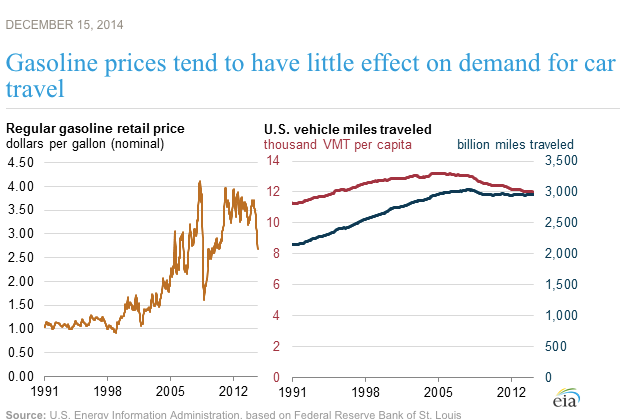The Trump administration is moving forward with its plan to relax fuel standards for new vehicles, including a freeze on escalating miles-per-gallon requirements and an attempt to revoke California’s power to control emissions in the state.
It sounds like the administration caving to demands from automakers, but industry responses to the proposals have been mixed. Meanwhile, California and more than a dozen states have filed suit against the administration. A lengthy court battle will make it challenging for companies to plan ahead.
Instead, the administration will make the case, according to documents obtained by the Associated Press, that burning more gas will make cars safer and cleaner.
You read that correctly. Former Environmental Protection Agency chief Scott Pruitt argued back in April that actually, new vehicles would be better for the environment if they weren’t held to Obama-era miles-per-gallon standards. Fewer regulations would make new vehicles cheaper, he reasoned, and that would encourage people to leave behind older, dirtier models faster. As a side bonus, more people would also be in safer, newer cars. And now, according to the AP, the administration has added an idea to that vision: “people will drive less if their vehicles get fewer miles per gallon, lowering the risk of crashes.”
The logic is very basic. If Scott gets 20 miles to the gallon and Rachel gets 60, a gallon of gas is $3, and each of them has a gas budget of $12, who can drive for more miles? Obviously, the answer is Rachel, who can go three times as far, which puts her at a higher risk of crashing.
But this assumption rests on the idea that every American has a fixed gas budget. In reality, while drivers complain about changes in gas prices, they tend to do the driving they’re going to do. Demand for gasoline is what economists call inelastic, or not responsive to changes in price. That’s why a gas tax would be a good way to raise money for infrastructure.

Trump’s EPA is right about one thing: It would be good if Americans drove a little less. We could make that happen by allowing more people to live near their jobs. Or providing better public transit service and making it easier and safer to walk or bike. Or we could put a tax on gasoline, which, if it doesn’t make people drive less, would at least raise money for repairs.
Making Americans buy more gas in the hopes that they’ll drive less, on the other hand, is nothing more than a stimulus for companies that sell gasoline.
